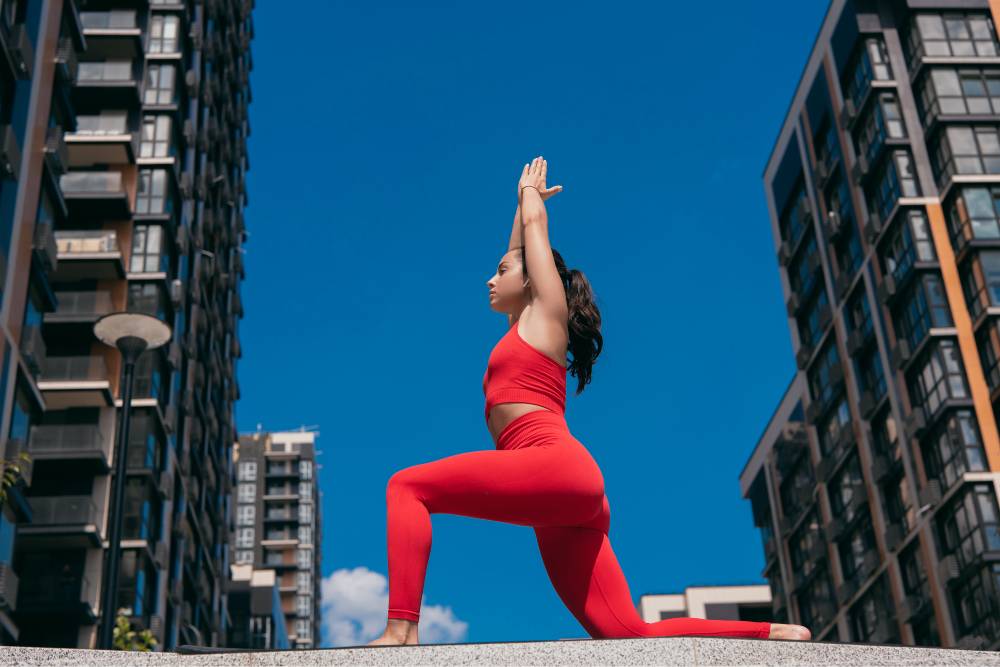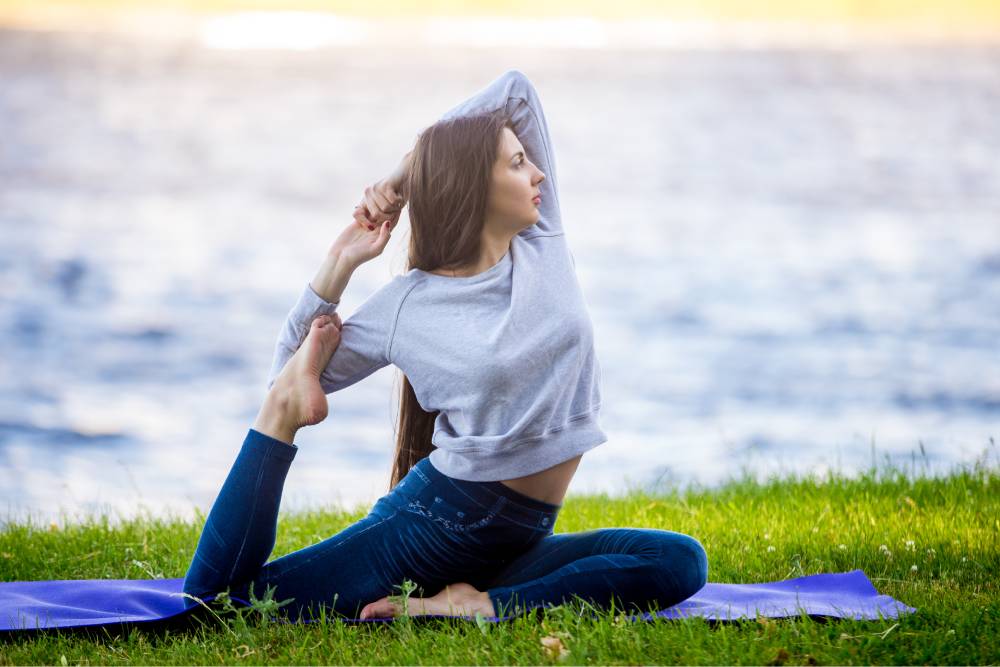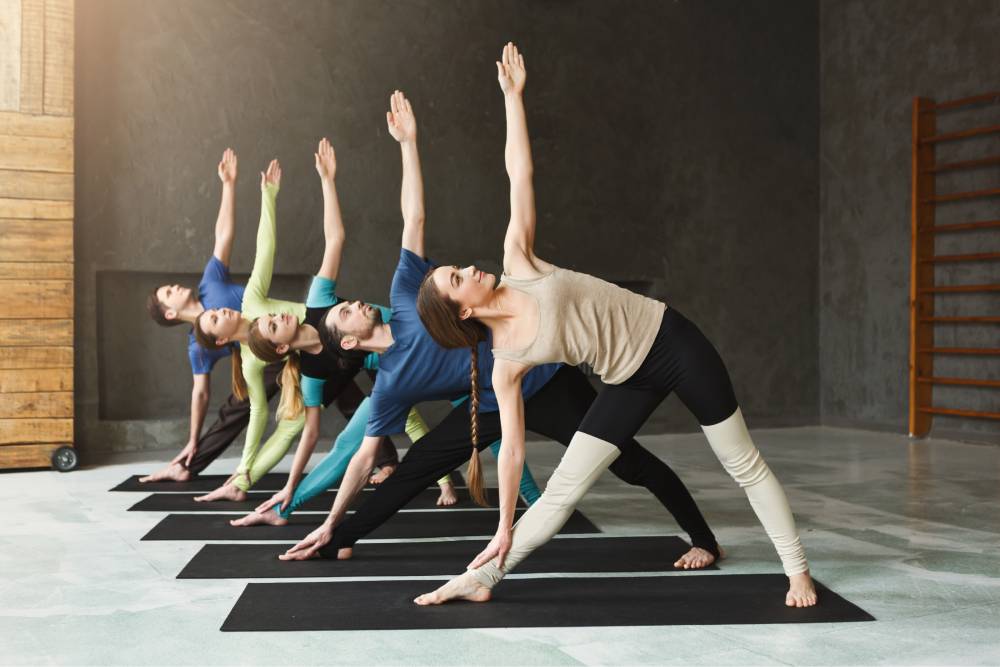Flexibility is an important aspect of physical fitness that allows us to move with ease and reduces the risk of injury. Yoga offers a holistic approach to improving flexibility by combining stretching, strength-building, and body awareness. Whether you’re a beginner or have limited flexibility, incorporating specific yoga poses and practices into your routine can gradually enhance your range of motion. Let’s explore some key poses and practices to help you increase flexibility through yoga.
Forward Fold (Uttanasana):
Stand with your feet hip-width apart and slowly hinge forward from your hips, reaching your hands toward the floor or your shins. Allow your upper body to relax and your head to hang. The forward fold stretches the hamstrings, calves, and lower back, promoting flexibility in the posterior chain.
Downward-Facing Dog (Adho Mukha Svanasana):
From a tabletop position, tuck your toes and lift your hips up and back, forming an inverted V shape with your body. Press your palms into the mat and extend your spine. Downward-facing dog stretches the hamstrings, calves, shoulders, and spine, improving flexibility throughout the body.
Crescent Lunge (Anjaneyasana):
Step one foot forward into a lunge position, with your back knee lowered to the mat. Lift your arms overhead and sink deeper into the lunge, feeling a stretch in the hip flexors and quadriceps. Crescent lunge opens the front of the body, promoting flexibility in the hips and thighs.
Butterfly Pose (Baddha Konasana):
Sit on the mat with the soles of your feet together, allowing your knees to drop out to the sides. Gently press your knees toward the ground while maintaining an upright posture. The butterfly pose stretches the inner thighs and groin, improving flexibility in the hips and groin area.
Extended Triangle Pose (Utthita Trikonasana):
Stand with your legs wide apart, turn your right foot out, and reach your right hand toward your right foot. Extend your left arm up toward the ceiling, keeping both legs straight. The extended triangle pose stretches the hamstrings, hips, and side body, improving flexibility and lengthening the muscles along the torso.
Camel Pose (Ustrasana):
Kneel on the mat with your knees hip-width apart. Place your hands on your lower back and gently arch backward, allowing your head to drop back and your chest to open. Camel pose stretches the front of the body, including the hip flexors, chest, and shoulders, enhancing flexibility in the spine and upper body.
Pigeon Pose (Eka Pada Rajakapotasana):
Start in a tabletop position, slide your right knee forward, and bring it toward your right wrist. Extend your left leg straight back, keeping the hips squared. Fold forward, resting on your forearms or forehead. The pigeon poses deeply stretches the hips, glutes, and hip rotators, improving flexibility in the hips and lower body.
Yin Yoga:
Yin yoga is a slow-paced practice that involves long holds in passive stretches, typically held for 3-5 minutes or more. This practice targets the deep connective tissues and helps to improve flexibility and joint mobility. Incorporating yin yoga into your routine can gradually increase your overall flexibility.
Tips for Safe and Effective Flexibility Practice:
Warm-Up: Prior to attempting deeper stretches, warm up your body with gentle movements and dynamic stretches to increase blood flow and prepare the muscles.
Breathe and Relax: As you move into a stretch, focus on your breath and consciously relax the muscles you are stretching. Avoid forcing or bouncing in a stretch, and allow your body to ease into it.
Practice Regularly: Consistency is key to improving flexibility. Aim to incorporate yoga for flexibility into your routine a few times per week, gradually increasing the duration and intensity of your practice.
Modify as Needed: Listen to your body and modify poses as necessary. Use props such as blocks, straps, or bolsters to support your body and maintain proper alignment.
Patience and Persistence: Flexibility gains take time. Be kind to yourself and appreciate minor victories along the road. Don’t compare your success to others and instead concentrate on your own.
Remember that flexibility is a lifelong practice, and each individual’s progress will vary. Approach your yoga practice with patience, kindness, and a sense of exploration. With regular dedication, you can gradually improve your range of motion and enjoy the benefits of increased flexibility in your daily life.




